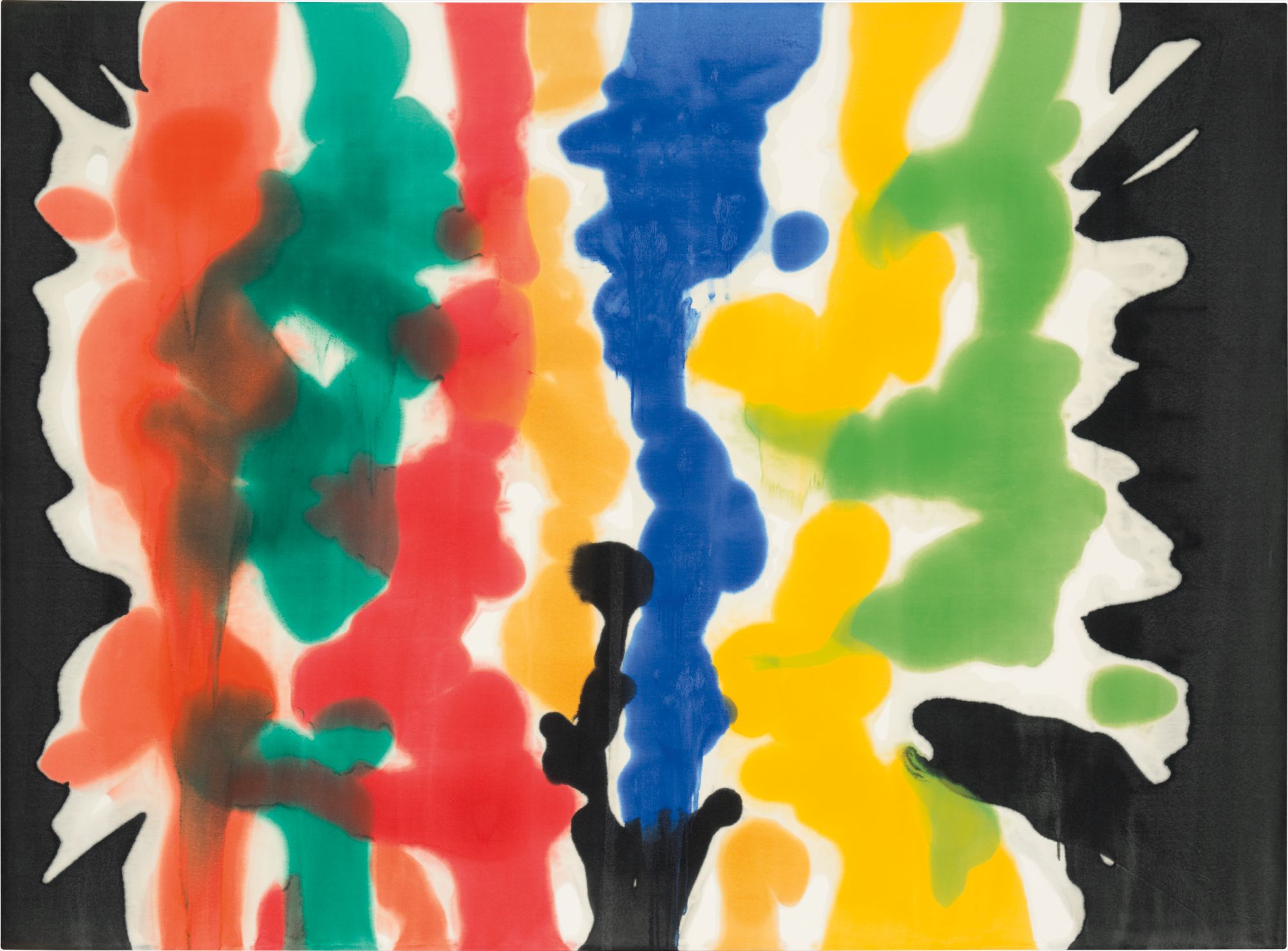

5Ο
Morris Louis
Para IV
Full-Cataloguing
Louis' investigation of pure color and light places him in an art historical lineage that can be traced back to the experiments of the French Impressionists, and even further back to Turner. In the present work, he focuses on the contrasting force of plumes of brilliant colors, which seem to explode from within the core of the canvas. Using thin washes of Magna, a type of new acrylic resin paint, Louis imparted an extraordinary luminosity to his canvases. His paint, which soaked into the weave of the fabric, seems to become one with the surface and retains both the paint's original coloration and its fluid character.
Rejecting the gestural painting style of the Abstract Expressionists, Louis is considered a profoundly intellectual painter, focused exclusively on color and texture. In Para IV, Louis nearly covers the entire canvas with pigment, abandoning the earlier form of a mass of pigment floating amidst a white background. The green, blue, yellow, black, and ochre swaths of color achieve an effect of radiant inner light that seems to emerge from the surface of the canvas while permeating throughout. In the present work Louis is able to achieve the appearance of a complex, modulated surface while maintaining a completely flattened picture plane. Much like Matisse’s découpage, Louis’ staining technique was radical and revolutionary. Works such as the Maquette for Nuit de Noël, in which Matisse has carefully arranged his cut and painted paper in order to fully account for the manner in which the light and space would be most beautifully rendered, both in the paper work and the final stained glass structure, clearly share a distinct lineage with Para IV. Both radiate with an inner light and incredible chromatic resonance in a flattened picture plane that still manages to be pregnant with meaning and import.
In 1959-60 Louis experimented with variations on his breakthrough Veil paintings of the mid-fifties. The present work is part of his series known as the Paras from the Greek prefix meaning “at or to one side of, beside, side by side.” Of the series, of which he only made six, Para IV is the superlative example. In this series, he returned to working from all four sides of the canvas, as in his first experiments with staining. The Paras had the new goal, however, of exploring color in discrete hues, as in the present work, where each color is possessed of its own energy, pulling in its own direction. This palimpsest of jewel-like tones conveys a mood of unrestrained ebullience. The virtuosity of Morris' painterly technique is demonstrated in full force in Para IV, in both the unprecedented clarity of color and the way it seems almost disembodied, not mitigated by brushwork or any other signs of the artist's hand.
Morris Louis
Exceptionally prolific yet meticulous over the course of his all-too-brief career, Morris Louis cemented a status as one of the most important proponents of Color Field Painting and one of the leaders of the Washington Color School. Working with such figures as Kenneth Noland and Sam Gilliam, Louis pioneered a greatly simplified form of abstraction that served as a stylistic conduit between Abstract Expressionism and Minimalism. By pouring greatly thinned washes of paint over the surface of unprimed canvas, Louis alternately achieved luminous, cheerful ribbons of color and an eerie and ethereal effect, marked by the use of chance and the participation of atmospheric elements such as gravity in the creation of his paintings.
Louis developed his mature style after a visit with Noland to the New York studio of Helen Frankenthaler at the suggestion of critic Clement Greenberg, where he learned of Frankenthaler’s innovative soak-stain technique. He used this method to pioneer no fewer than three major mature series that can be characterized by their atmospheric intensity, psychological presences, and crisp, pristine mellifluousness. Louis succumbed to lung cancer in 1962 and was honored the following year with a posthumous exhibition at the Solomon R. Guggenheim Museum, New York. He has been the subject of major retrospectives at the Museum of Modern Art, New York, the High Museum, Atlanta, and the Hirschhorn Museum and Sculpture Garden, Washington, D.C.